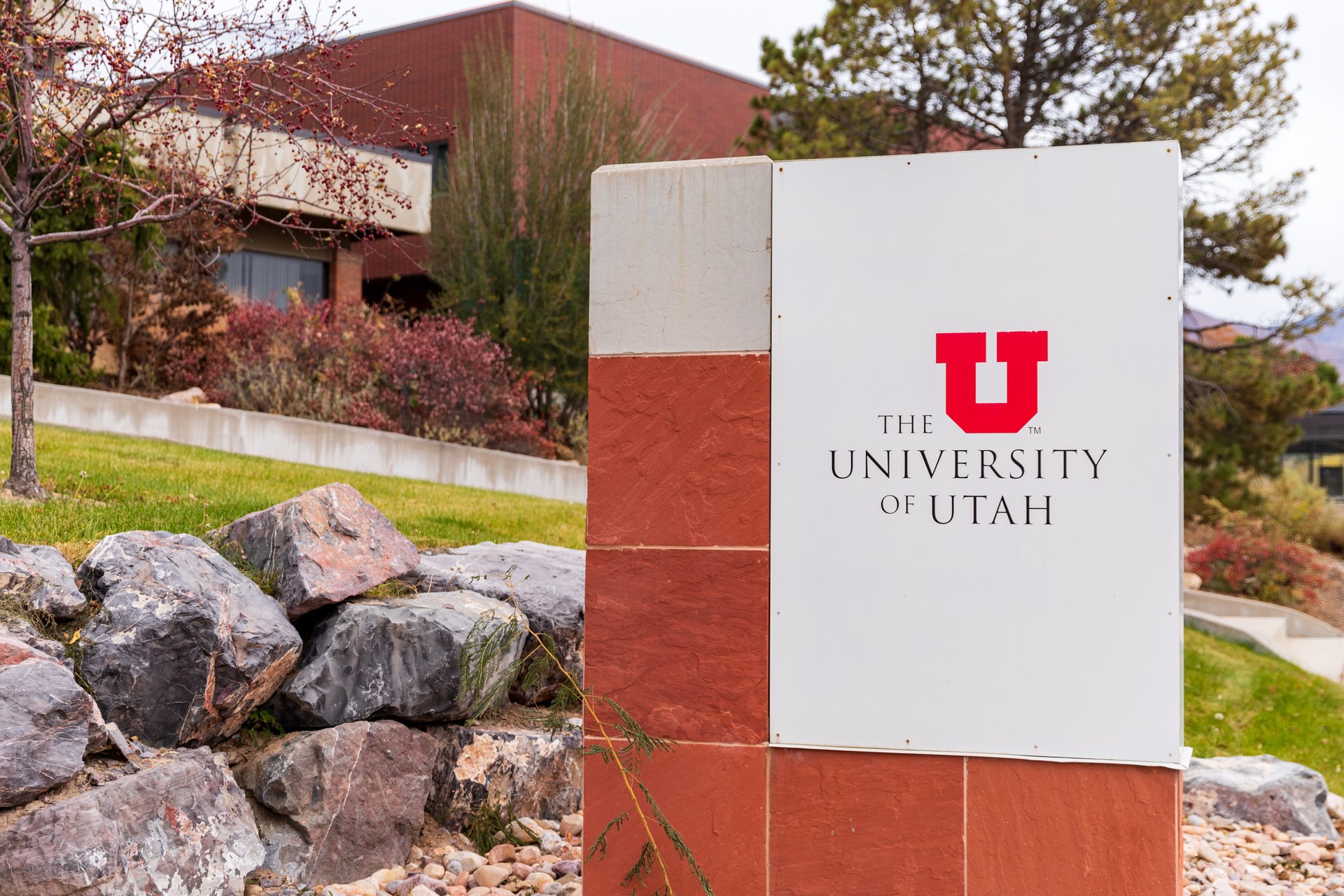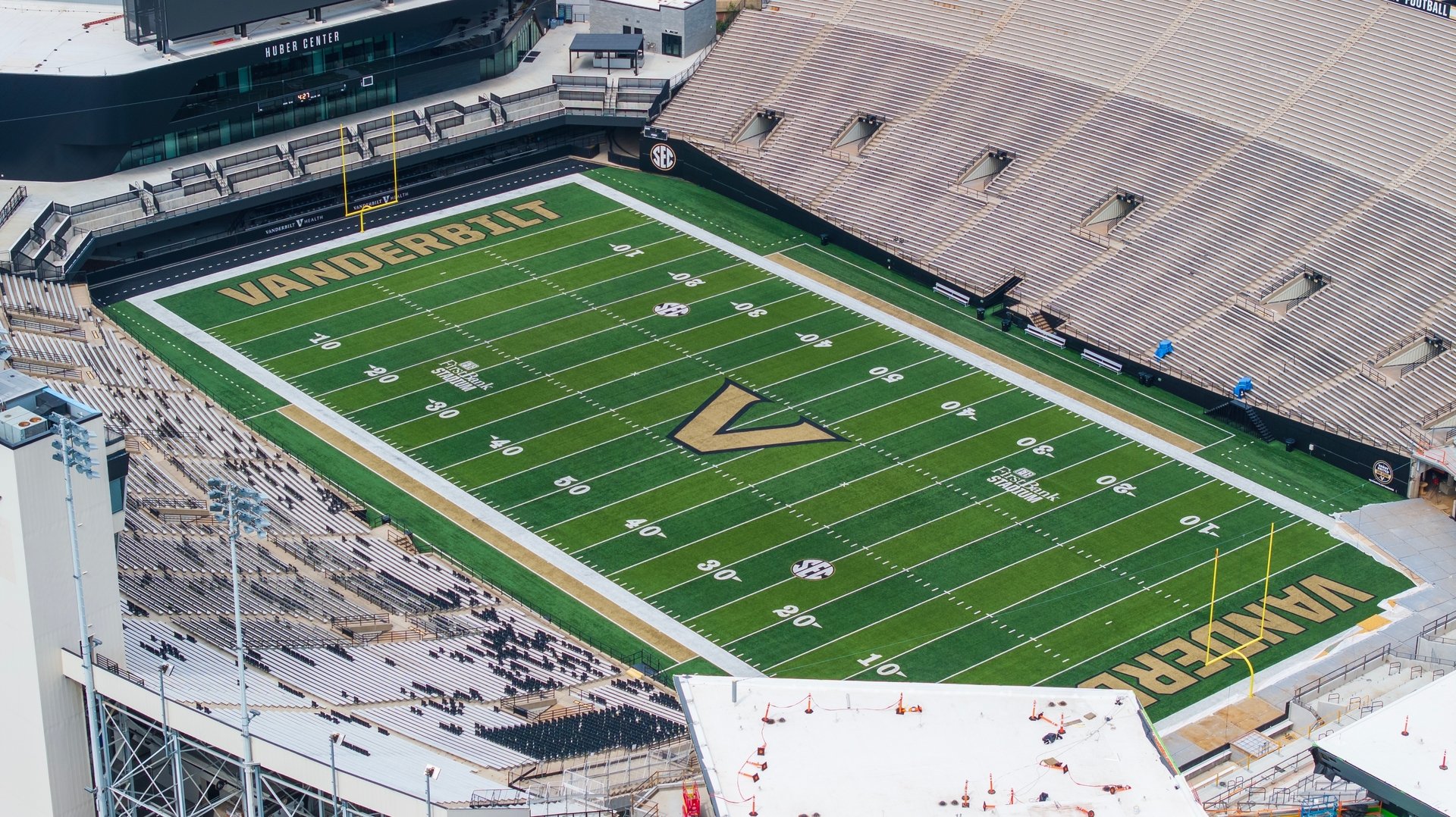Good morning, and thanks for spending part of your day with Extra Points.
A few quick housekeeping notes before we get started.
First, I’d like to welcome a new addition to the Extra Points team. We’ve added KC Smurthwaite to the Extra Points family. KC is a former athletic department staffer at Utah State and Southern Utah, and currently a consultant in the college sports space. KC will occasionally write newsletters for Extra Points and NIL Wire, but will focus most of his time in helping sell Extra Points Library and sports management curriculum support materials.
Speaking of NIL-Wire, I’m excited to announce that we’ve also made our hire to run that newsletter. I believe she’ll be introducing herself to everybody on Monday, so make sure you’re subscribed. We’ll have a lot more news about NIL Wire in the very near future.
In non-hiring news, if you have a second, I’d LOVE if you could fill out this very quick survey about Extra Points. We’re working on our budgets and plans for the rest of this year (and early Q1 of next year), and we want to make an Extra Points subscription as useful as possible for you. Knowing what you actually like and don’t like…helps an awful lot! I’ll close the survey on Monday.
Finally, I’d like to share a quick message from one of today’s sponsors, Swipe Less, Live More
Nearly 9 out of every 10 student-athletes are overwhelmed
Are you a proactive college leader? What if a simple 14-day challenge could improve your student athletes’ mental health and performance? Sacramento State participated in the Swipe Less, Live More digital wellness program and did just that.
“Student-athletes have more on their plate than ever before, and when they graduate, they’ll face real issues. Implementing the SLLM challenge helped us equip them with self-awareness and resilience.”
–Garrison. Student-Athlete Development, California State University-Sacramento
Swipe Less, Live More helps athletes sleep better, stress less, and sharpen focus. The program combines micro-lessons, small daily challenges, and a custom progress tracker, creating measurable results. A done-for-you strategy your athletic department can replicate without more staffing.
One of the frustrating things about writing four Extra Points newsletter a week is that I seldom get time to really go back to a topic and provide additional context. There’s just too much dang stuff happening all the time! But often, after I publish a newsletter, folks in and outside the industry will reach out, share additional context, ask thoughtful questions…and make me wish I could go back and take another swing.
I’d like to do that a bit today.
What the Tennessee/adidas deal means, and doesn’t mean:
That Tennessee was going to flip from Nike to adidas was one of the worst kept secrets in the college sports industry. I wrote about this last month, as I think this deal will be part of a very active apparel market free agency period. There are a lot of big name programs whose contracts are set to expire around 2026.
A few of those schools are now off the board. Kentucky, for example, recently announced an extension with Nike. Industry sources have also told me that LSU is expected to remain a Nike program for the foreseeable future. But other big names, like USC, Penn State, Ohio State, South Carolina, Georgia Tech, Wisconsin, West Virginia and Iowa, have contracts that are scheduled to expire. My educated guess is from that list, at least South Carolina and Georgia Tech will change partners.
I’ve said this several times, including in my previously linked story, but it’s important to reiterate for our non-industry friends. The big number you see in the headline about an apparel contract is not cash. These contracts provide a bunch of stuff, like athletic apparel and equipment, which has a cash valuation. If schools are lucky (and if they’re a huge brand, like Tennessee), then they also get cash. But most programs don’t.
I think it’s quite clear that Tennessee is very important to adidas. The three stripes have a portfolio of many major college sports brands, like Kansas, Louisville, Washington and Nebraska, but I think it’s easy to argue that the Volunteers are now the most well-rounded and prominent across all sports. When the musical chairs stop, Tennessee may very well still be the biggest athletic department under the adidas banner. There will unquestionably be a healthy cash check coming to the UT athletic department every year.
I am a little more skeptical about the value of the cash going directly to athletes…or at least, in the competitive advantage of that cash. Adidas is going to allocate sports marketing dollars to directly compensate Tennessee athletes above the House Cap in multiple sports. But as Chris McGuire, the adidas vice president of sports marketing, North America, admits to Yahoo! Sports here, “This is the first one.”
If that works, there’s no reason adidas won’t do the same thing for Miami, Nebraska, Kansas or their other university partners. Nike, Under Armour, and hell, New Balance, will almost assuredly do the same. And shoot, if adidas thinks they need to offer a better deal to USC or Ohio State to get them to flip, they won’t hesitate to do so, no matter what they promised (or didn’t promise) to Tennessee.
I don’t have a strong opinion about what athletic apparel brands are “best”, and none of them are currently sponsoring Extra Points at the moment (you can change that, of course, by emailing [email protected]). My gut is that athletic apparel companies will try to compete on NIL deals, but will find that factors beyond pure cash will ultimately hold the most sway for most of their negotiations. I won’t be shocked to see a major program let athletes wear whatever shoes they want, brand deal be damned, in the near future.
Speaking of third parties and above-the-cap revenue generation, let’s talk MMR again
Earlier this week, I caught up with some folks at Learfield to discuss how the company is trying to make athlete-driven NIl content work…not just for schools and athletes, but for brands.
As Learfield CEO Cole Gahagan told Yahoo, driving deals for athletes is a major area of focus for the company.
“Now that salary caps have been in place, there is increased pressure to find more opportunities to create more events for athletes,” Gahagan said. “When we have dedicated resources on the ground on campus — sales people dedicated to NIL, NIL activation coordinator and NIL content producer — we see the greatest and most NIL deal-making output at our properties.”
Dedicated resources on the ground was a major theme of my conversations with company executives. Learfield has personnel on campus to help get to know the actual athletes, help produce and shoot the content, and to pair it with the best possible brand partners. That process isn’t heavily automated or done programmatically….it takes lots of people.
Solly Fulp, Learfield’s Executive Vice President, NIL Growth & Development, mentioned a campaign to me earlier this week that has stuck with me. Learfield was working with the University of Texas and the St. David’s Medical Center, a hospital in Austin. Everybody wanted to find sponsorship activations that could include athletes, but it also needed to make business sense.
The solution was a video series full of testimonials from Longhorn athletes who were born at St. David’s. Not only would that video series be particularly impactful, but the school could run those videos as in-game programming on scoreboards over the course of the season, creating additional sponsorship assets.
I don’t think it is reasonable to expect any MMR company, be that Learfield, JMI, Playfly or anybody else, to simply cut checks directly to athletes without care or thought. Not only do athlete NIL deals still (for now, I guess) have to pass muster with the CSC clearinghouse, but MMR companies aren’t booster clubs. They work with brands who want a meaningful ROI on their marketing spend, and if they don’t get one, they won’t renew.
So the question becomes how do those companies bring new types of deals or brands to the table (perhaps beyond industries that already regularly advertise in college sports, like financial services, health care, insurance and automotive), how they incorporate athlete intellectual property with university IP, and how they make enough of a buck doing it to keep the operation going.
I legitimately believe there’s untapped potential in revenue generation, both for athletic departments and athletes, on the MMR side. Fulp told me he sees potential in MMR firms getting better about the type of sponsorship assets being sold (perhaps moving more away from static images and more towards storytelling or deeper campaigns), as well as getting better in partnering with the right athletes. I’m sure the folks at the other major companies (and schools) have good ideas too. It’s a space I want to continue to monitor.
And now, a quick sponsor message about shorts:
The Shorts You Didn't Know You Needed
It’s time you meet the Jetsetter Shorts by Jack Archer—your ultimate travel companion. Crafted from luxurious Japanese Rebound fabric, they offer exceptional stretch for unrestricted movement, resist wrinkles so you stay crisp off the plane, control odors to keep you fresh all day, and repel stains to handle spills with ease.
The biggest advantage is the fit—it’s tailored without ever feeling tight. You get extra room where you need it and a trim silhouette everywhere else, plus a diamond-shaped gusset for smooth movement and a curved waistband that always sits just right.
But don’t just take our word for it—grab yourself a pair and try them risk-free for 30 days. If you don’t love them, get a full refund, no questions asked.
A quick note on context and budgets
This week, I shared a breakdown of what (almost) every public D1 school reported spending on their women’s volleyball programs. I get this data from the “total operational expenses” figure that gets reported to the NCAA on what’s called the Membership Financial Reporting System report, or MFRS. I’ve published these reports for several other sports, like men’s soccer and softball, and will likely share others in the coming weeks.
These are useful figures, I think, for showing trends, or relative spending among peers. But the data isn’t completely standardized, and can lack context. A few ADs and coaches reached out to me after the last story, not to critique what I had written, but to share some info about why some figures showed up the way they did.
If a sport spending number looks much higher, or lower, than you’d expect, a few things worth considering could be,
Does the school own the arena or facility it uses for home games, or does it need to pay rent?
Does this program need to pay guarantees to get home games, due to difficult geography or RPI rating?
Does this school need to pay higher staff salaries due to the local cost of living?
Did this school have to buy out a coach contract that fiscal year?
How much of the sport’s reported revenue came from student fees or institutional support that year?
I wish I could go over all of that in depth for every school and every sport, but this is an email newsletter, and my CMS starts screaming AWOOGA AWOOGA once my emails hit 1,750 words. For those school and industry personnel who are really interested in the nitty-gritty of this data, I’d encourage you to grab an Extra Points Library account (or pay me to run reports for you). Otherwise, I’ll share the raw numbers with as much context as I can squeeze into an email.
Thanks for reading. I’ve got some big news to share next week, and some original reporting in the hopper. Tell your pals to read Extra Points, and I’ll see you on the internet.



















